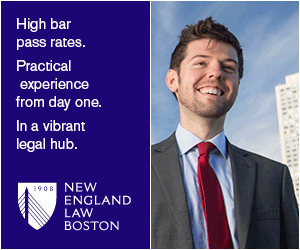Healing our divided society: the Kerner Commission 50 years later
May 1, 2019
Speaking to a crowd of students and New Hampshire residents, Alan Curtis, the last living member of the Kerner Commission, spoke about inequality and ways to heal the divided nation.
Fifty years ago, following riots in over 100 American cities and the assassinations of Senator Robert F. Kennedy and Dr. Martin Luther King Jr., President Lyndon Johnson established the National Advisory Commission on Civil Disorders, more commonly referred to as the Kerner Commission. The Commission was largely made up of white males who, according to Alan Curtis, were part of the Washington “bureaucratic establishment.” Curtis worked on the Commission at the time. They concluded that America was heading towards “two societies, one black, one white. Separate and unequal.” They predicted that if action was not taken, things would only get worse and asserted that the solutions existed, and that they only needed funding. That November, Richard Nixon was elected president and ignored the Commission’s resolutions and recommendations.
Twenty-five years later, in 1993, CBS did a special report on the legacy of the Kerner Commission. They found that the commission’s predictions had “largely come true” and “everything has essentially gotten worse” since 1968.
Since 1993, Alan Curtis says “not much has changed in those twenty-five years.” According to him, the United States still faces the problems of mass incarceration, large prison populations, and biased sentencing laws. Additionally, according to Curtis, public school segregation, deep poverty, and child poverty have all increased since 1968. The United States has the highest rates of incarceration, child poverty, and homicides of any industrialized democracy.
The solutions to the problems plaguing the United States exist and, according to Curtis, were known in 1968. According to him, the government needs to make public investments in infrastructure and after school programs such as Head Start, a program headed by the Department of Health and Human Services that provides comprehensive early childhood education, health, nutrition, and parent involvement services to low-income children and their families. Additionally, Curtis suggests giving more power to the unions and having a single payer health system like the ones used in countries like Taiwan, Canada, and the United Kingdom. Curtis argues that lowering inequality “won’t make us poor.” According to the 1993 CBS report, for every dollar spent on these programs, the United States economy would get $5 back.
In addition to increasing funding to what does work, Curtis says the United States needs to reduce funding for what does not. This includes things such as zero tolerance policing, prison building, and mass incarceration. He also stated that the United States needs to move past from the “false” 1980s’ rhetoric of government help being bad.
Curtis admits that it is harder to do these things now more than ever, but according to him, “we must begin.” Borrowing a phrase from President John F. Kennedy, Curtis said the United States needs Americans who ask, “what they can do for their country.” These solutions are nonpartisan, and they could use support from citizens “on the right and the left.” To lower inequality, voting reforms need to happen, according to Curtis, so that the voices of all Americans can be heard. He explained how good government must invest in Kerner Priorities and these investments must be based on “evidence, not ideology.”
When asked by the Crier if he believed there was a point of no return, Curtis responded that, though “we asked that question then,” he does not believe there is. However, Curtis added, the United States must be careful and strengthen its democracy.
Curtis’s speech came at a time when the New Hampshire Institute of Politics had an exhibit on display entitled Perspectives on Equality, created by Sarah Hummel, class of 2019, and Matthew Solomon, class of 2020, as part of the Institute’s American Ideal Series. The display is in the Seminar Room of the NHIOP building and open to the public from Monday to Friday from 8:30 a.m. to 4:30 p.m. According to an email sent out by the NHIOP, “this exhibit displays the various ways that equality is portrayed in the American political system.” According to Matthew Solomon, the exhibit is the fifth in the series and focuses on equality, which, according to Solomon, is “an ideal which is consistently used throughout American history yet seems to always have a different interpretation.” Recently, the Institute recently received a number of Lincoln artifacts from Alan Hawkins which is why half the exhibit is focused on President Lincoln. The Lincoln side of the exhibit includes photographs, a Lincoln bust, and Confederate money. The Martin Luther King Jr. side includes newspaper and magazine articles along with promotional material for government programs such as No Child Left Behind.


